Edible Cacti: A Guide to Safe Consumption
Cactus leaves are currently popular as a trendy food. They are considered healthy and are gaining recognition as a potential superfood. In this blog, we will show you how to make a delicious summer salad using cactus.
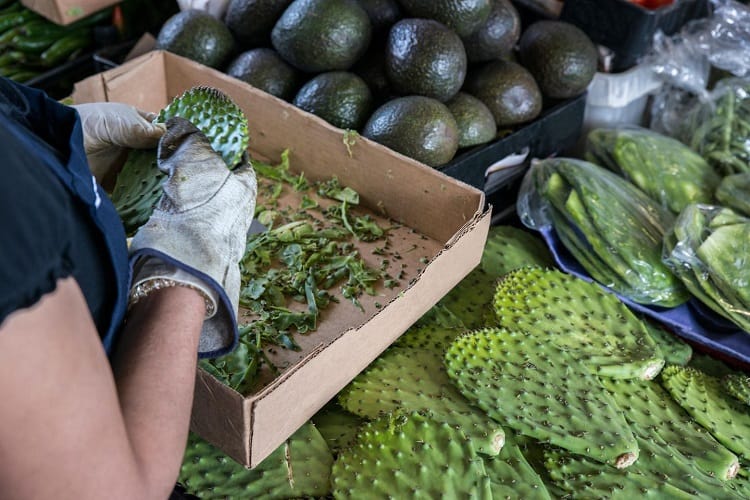
Contents
Are All Cactus Edible?
In recent years, plant-based diets have become popular, and cactus is gaining attention as well. People are curious about which types of cactus are safe to eat. The truth is, this knowledge goes way back to ancient civilizations. For over 12,000 years, the prickly pear cactus has been an important source of nutrition for the people of Mesoamerica.
In Mexican cuisine, prickly pear cacti, also known as “nopales” in Spanish, are widely used. They are eaten in salads, stews, and even as an alternative to grilled meat. Surprisingly, these prickly plants are incredibly healthy, packed with vitamins and nutrients, offering various benefits. They were traditionally used as natural medicine, believed to aid in weight loss and protect against diabetes. Consequently, they have earned their place as part of the superfood craze, alongside chia seeds and goji berries. Cactus cooking has become a popular trend in America, with it being used in smoothies and even breaded as a vegetable schnitzel alternative.
As more people discover the exceptional qualities of cactus, cactus-based foods and drinks are making appearances in grocery stores, restaurants, and farmers markets worldwide.
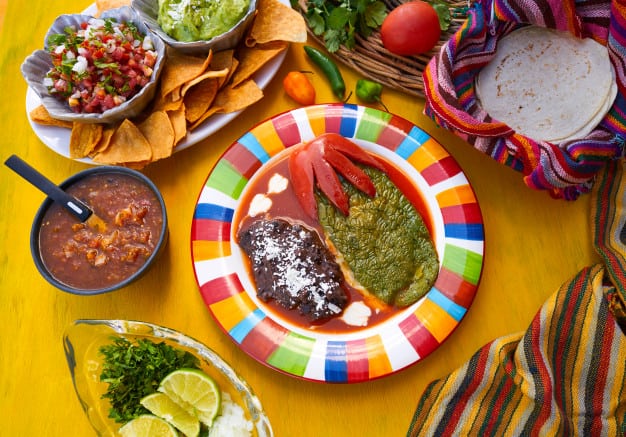
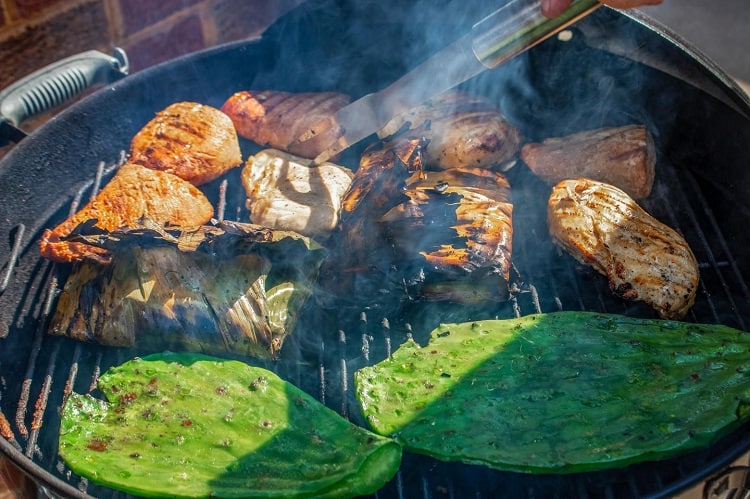
What Kind of Cactus Can You Eat?
Now, you might be wondering, what kind of cactus can you actually eat? Well, not all cacti are edible, so there’s no need to nibble on the small cactus next to your computer or slice up the cactus sitting on your windowsill. Only the young, green shoots of the prickly pear cactus should be consumed.
In Mexico, they also consume the barrel cactus, a spherical cactus with a thick, round shape, scientifically known as “echinocactus” because of its resemblance to a sea urchin.
As for other cacti, only the fruits are typically eaten, such as the saguaro and dragon fruit (also known as pitaya). Some other succulent plants, like blue agave (used to make tequila) or maguey (used for pulque or mezcal), can also be edible.
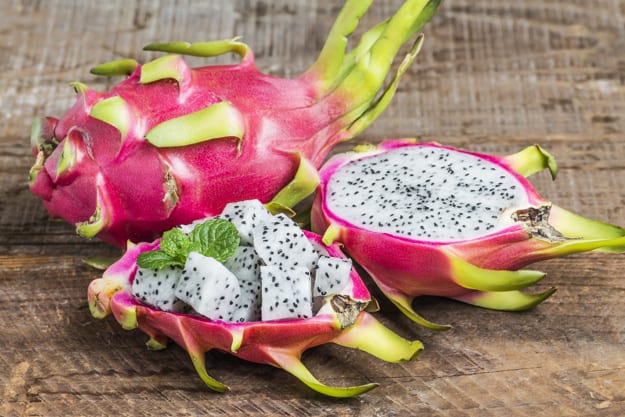
Benefits of Eating Cactus
The Opuntia cactus, also known as nopal, is a popular ingredient in Latin American cuisine. It is often served with eggs and salads because of its health advantages. Nopales are packed with phytonutrients that can help lower cholesterol and control blood sugar levels. The fiber in nopales is filling, and the gel-like pectin it contains can trap and eliminate cholesterol from the bloodstream. This slows down the digestion of carbohydrates, preventing blood sugar spikes and reducing the risk of diabetes. Additionally, nopales provide important minerals such as calcium, potassium, magnesium, and sodium, as well as vitamins A, C, and iron.
But how can you eat cactus leaves without getting poked by the spines? No worries! Simply scrape off the spines with a sharp knife. Make sure to remove the dark areas from where the spines come out. It’s recommended to wear gloves while handling them. Rinse the leaves with water, and then prepare them however you like.
Cactus Pear Nutritional Benefits
According to the “Nopal Recipe Book” created by the Ministry of Rural Development and Equity for Communities, nopales are composed of 95% water, making them low in calories. Roughly 100 grams of nopales provide approximately 27 kcal of energy. They also contain antioxidants like beta-carotene, polyphenols, and vitamin C.
Nutritional value (per 100 grams):
| Calories: | 16 kcal |
| Carbohydrates: | 3.3g |
| Protein: | 1.4g |
| Fats: | 0.1g |
| Calcium: | 164 mg |
| Potassium: | 195 mg |
| Iron: | 0.5 mg |
What Does Cactus Fruit Taste Like?
Did you know that the prickly pear is an edible cactus? You can enjoy the young leaves in soups or salads as a vegetable. The fruit, known as cactus fig, can be eaten fresh or dried.
In terms of taste, the leaves have a cucumber-like flavor, but they can occasionally have a slightly bitter aftertaste, which may not be appealing to everyone when eaten alone. On the other hand, the fresh fruit is juicy and its taste falls somewhere between pear and melon. Inside, you’ll find numerous small black seeds that can be swallowed without a problem. This sweet fruit contains fiber, vitamins (A, B1, B2, C), potassium, calcium, iron, and magnesium.
When cooked, some compare the flavor of cactus leaves to green beans, and the texture is similar to okra. Others describe them as having a pleasant lemony taste and a slight crunch, reminiscent of bell peppers.
How Can We Eat Cactus?
There are various ways to prepare and enjoy cacti without sacrificing taste. While it may seem daunting at first, it’s actually simpler than it sounds.
Vegetables
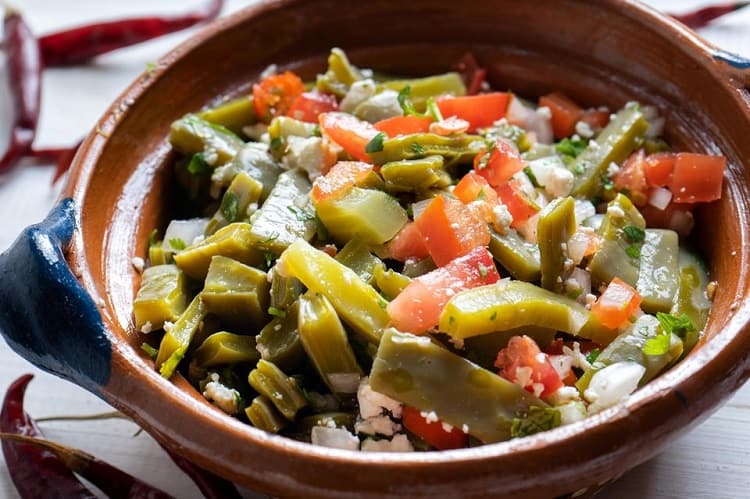
The shoots of prickly pear cacti can be treated as vegetables since they don’t have woody stem parts. They need to be thoroughly washed, then sliced and either boiled or grilled. Afterward, they can be added to quesadillas, sauces, fajitas, salads, or used as a garnish. They can also be eaten raw, although the slightly bitter taste might not appeal to everyone. Nopales pair well with the flavors of cheese, chili peppers, cilantro, corn, eggs, lemon, lime, onions, oregano, salsa, chives, sweet peppers, tomato, tortillas, and tropical fruits.
Candy
Cactus candy is made from the water-rich stem of certain cactus species, primarily Echinocactus and Ferocactus, as they contain the most water and create thirst-quenching treats. The indigenous people have been using these sweets for a long time.
To prepare cactus candy, the thorns are first removed by cutting the ribs lengthwise, followed by removing the bottom. Then the cactus stem is cut into strips and divided into pieces. These steps are usually done on site since the pieces are easier to transport than whole cacti. Afterwards, they are cooked and, after a few days, drained and ready to eat. The candy has a naturally sweet taste due to the sweetness of the plant juice.
Beverage
Various drinks can be made from cactus, particularly from popular cactus genera in European areas. However, it should be noted that these cactus processing methods do not have a strong tradition in the cactus’s country of origin.
Can You Eat Prickly Pear Seeds?
When it comes to prickly pears, the inside is juicy and fresh, filled with abundant seeds. If the prickly pear is not too large, it can be eaten whole, including the seeds. However, it’s important to consume them in moderation, as too many seeds can cause constipation. When eaten in appropriate amounts, the seeds of prickly pears can provide certain benefits.
Prickly pear seeds benefits
The seeds found in this fruit can help alleviate constipation issues. They are also known to aid in combating gastritis, heartburn, and gastric ulcers.
